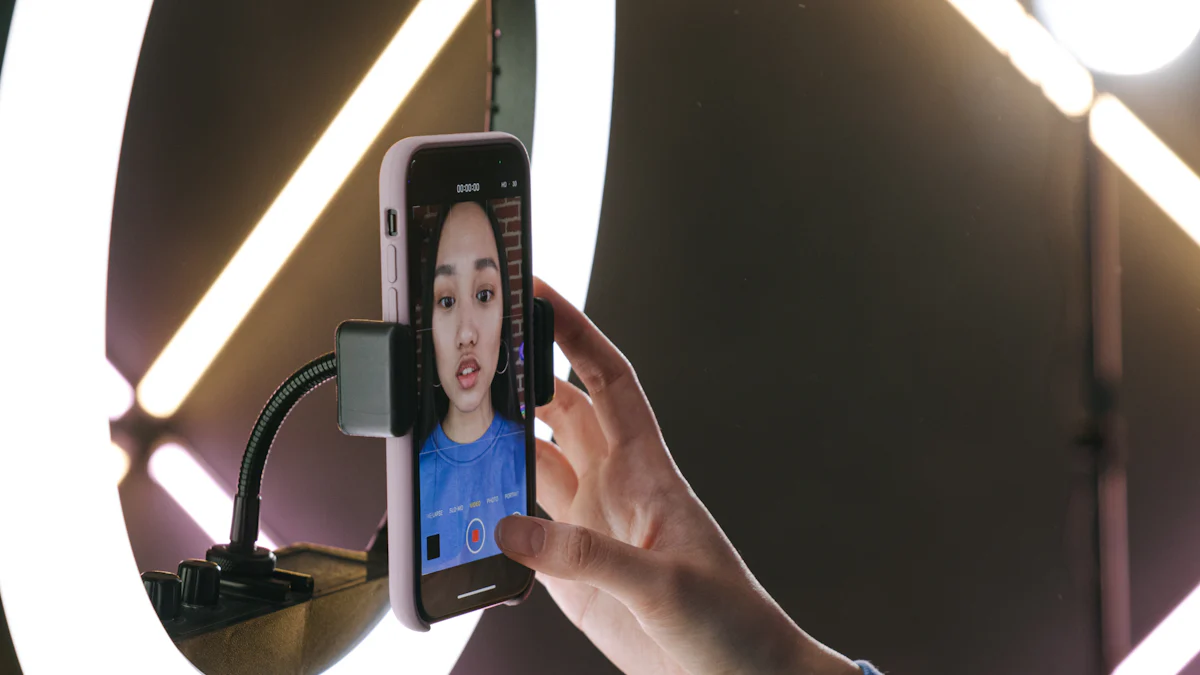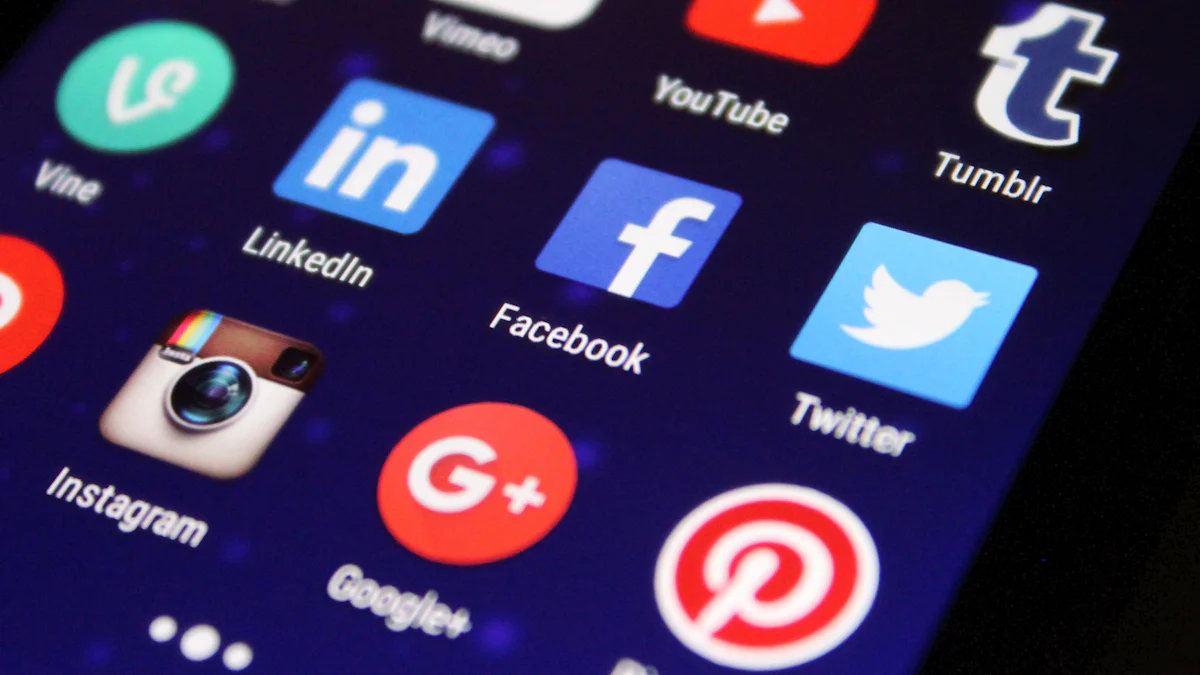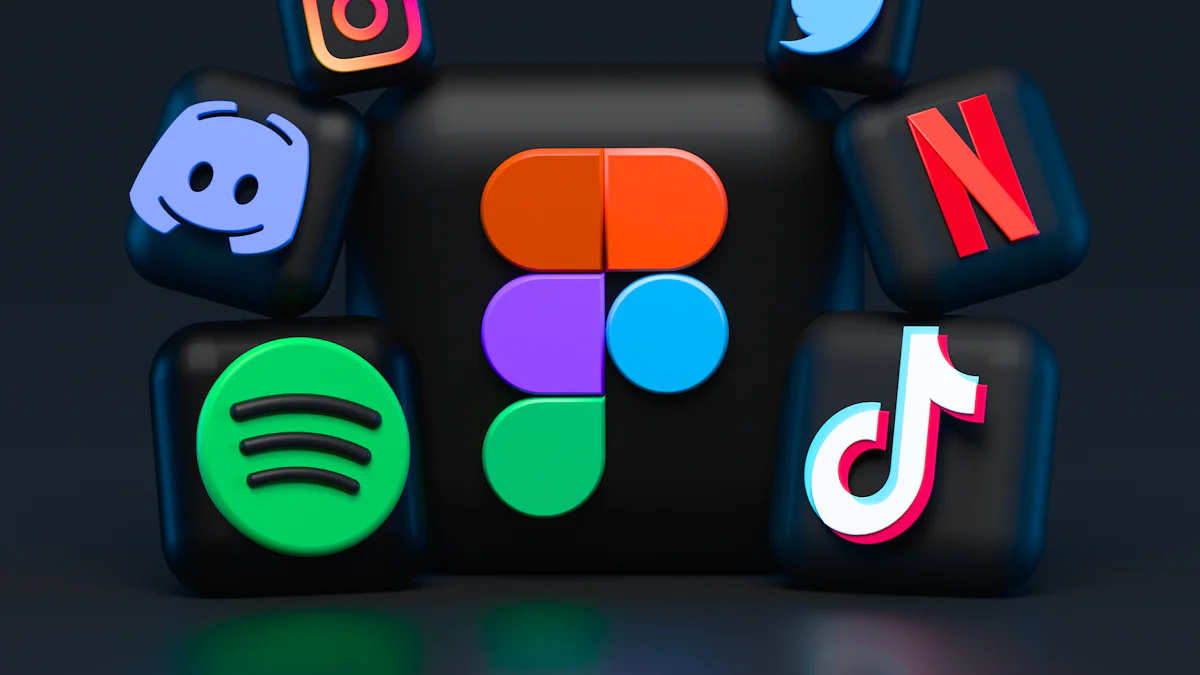Why AI Influencers Are Changing Social Media Marketing

Have you noticed how artificial intelligence social media influencers are taking over your feed? These digital personalities are more than just computer-generated images. They create content that feels personal, relatable, and surprisingly human. With 52% of social media users following virtual influencers and a market projected to hit $37.8 billion by 2030, it’s clear they’re reshaping how brands connect with you. Their ability to deliver consistent messaging and hyper-targeted campaigns makes them a game-changer in marketing. Whether it’s fashion, tech, or lifestyle, AI influencers are everywhere—and they’re here to stay.
The Rise of Artificial Intelligence Social Media Influencers

Defining AI Influencers
What are AI influencers and how do they work?
AI influencers are digital personalities powered by advanced technologies like Natural Language Processing (NLP) and Generative Adversarial Networks (GANs). These tools allow them to create human-like conversations and produce stunningly realistic visuals. Unlike human influencers, they don’t exist in the physical world. Instead, they live entirely online, interacting with you through social media platforms.
Think of them as a blend of creativity and technology. They can post photos, share stories, and even respond to comments. Their ability to simulate human behavior makes them feel surprisingly relatable. This combination of tech and personality is why artificial intelligence social media influencers are becoming so popular.
Examples of popular AI influencers like Lil Miquela and Shudu
You’ve probably heard of Lil Miquela, one of the most famous AI influencers. She debuted in 2016 and quickly gained millions of followers with her trendy outfits and relatable posts. Then there’s Shudu, the world’s first digital supermodel. Her flawless beauty and high-fashion collaborations have made her a favorite among luxury brands. These influencers are proof that AI can create personalities that feel just as engaging as real people.
Why AI Influencers Are Thriving
Cost-effectiveness and scalability
AI influencers are a dream for brands on a budget. For example, Lil Miquela charges around $9,000 per post, while a human influencer with a similar following might charge $250,000. Plus, AI influencers don’t need travel or accommodation expenses. They’re available 24/7, ensuring your brand stays visible and engaged with audiences worldwide.
Consistent branding and messaging
With AI influencers, you get complete control over their tone, style, and behavior. They never go off-brand, which is crucial for maintaining a strong social media presence. Whether it’s a quirky personality or a polished professional vibe, they deliver exactly what your brand needs.
Data-driven personalization and audience engagement
AI influencers excel at using data to connect with you. They analyze trends and audience preferences to create hyper-targeted content. This approach not only boosts engagement but also ensures campaigns resonate with the right people. Their built-in analytics make it easy for brands to measure success and refine strategies.
The Impact on Human Influencers
Collaboration vs. Competition
How human influencers are adapting to AI influencers
You might wonder if AI influencers are replacing human ones. The truth is, they’re not. Instead, human influencers are finding ways to adapt and thrive alongside their artificial counterparts. By working together, they’re creating campaigns that blend human creativity with AI precision. For example, AI influencers can analyze data to measure campaign effectiveness. This helps human influencers refine their strategies and deliver better results.
AI influencers also complement human efforts by working around the clock. While you sleep, they’re engaging with audiences, ensuring your brand stays active 24/7. Plus, they can be programmed to align perfectly with a brand’s identity. This gives human influencers full creative control while leveraging the unique advantages of AI. It’s a win-win situation.
Examples of partnerships between human and AI influencers
You’ve probably seen collaborations between human and AI influencers without even realizing it. These partnerships often combine the relatability of human influencers with the futuristic appeal of AI. For instance, a human influencer might team up with an AI influencer to promote a product, creating a campaign that feels innovative and engaging. This approach allows brands to connect with audiences in fresh and exciting ways.
Ethical and Social Implications
Transparency in AI-generated content
Transparency is a big deal when it comes to artificial intelligence social media influencers. If you don’t know an influencer is AI-generated, it can feel deceptive. Audiences today are savvy. They can often tell when interactions lack a human touch, which might lead to a disconnect. Brands need to clearly disclose when they’re using AI influencers to maintain trust.
Audience trust and authenticity concerns
Trust is everything in social media marketing. If you feel misled by an AI influencer, it can damage your perception of the brand. That’s why authenticity is so important. Brands must ensure their AI influencers are upfront about their nature. This honesty helps build genuine connections, even if the influencer isn’t human.
Note: Ethical concerns go beyond transparency. Issues like data privacy, copyright, and bias in AI-generated content also need attention. Brands must address these challenges to ensure their campaigns remain ethical and trustworthy.
Benefits for Brands

Enhanced Marketing Efficiency
Cost-effective campaigns with scalable content creation
AI influencers are a game-changer when it comes to saving money. Unlike human influencers, they don’t need travel, accommodation, or expensive photoshoots. This makes them a cost-effective solution for brands looking to stretch their marketing budgets. Plus, they’re available 24/7, so your campaigns can run around the clock without any downtime. Whether you’re targeting a local audience or going global, AI influencers scale effortlessly, reaching millions without logistical headaches.
AI also automates tasks like performance tracking and content optimization. This means you can focus on strategy while the technology handles the heavy lifting. Studies even show that large-scale campaigns using AI can improve efficiency by up to 20%. That’s a huge win for your marketing team.
Consistent messaging across diverse platforms
With AI influencers, you never have to worry about going off-brand. They’re programmed to align perfectly with your company’s image and values. Whether it’s Instagram, TikTok, or Twitter, they deliver consistent messaging across all platforms. This ensures your audience gets a unified experience, no matter where they interact with your brand. It’s like having a marketing team that never misses a beat.
Data-Driven Personalization
Using AI to create hyper-targeted campaigns
AI influencers excel at personalization. They analyze massive amounts of data to understand what your audience wants. By uncovering trends and behaviors, they help you create campaigns that truly resonate. For example, AI can segment your audience based on interests and tailor messages to fit each group. This hyper-targeted approach ensures your content feels relevant and engaging.
AI also predicts the best times to post and recommends how often to share content. This level of precision helps you maximize engagement and get the most out of your campaigns. It’s like having a crystal ball for your marketing strategy.
Examples of successful brand collaborations with AI influencers
Many big names have already jumped on the AI influencer bandwagon. For instance:
| Brand | AI Influencer | Campaign Description |
|---|---|---|
| Dior | N/A | Used AI influencers in advertising campaigns. |
| IKEA | N/A | Engaged AI influencers for marketing purposes. |
| Domino's Pizza | N/A | Collaborated with AI influencers in promotional activities. |
| Coach | Imma | Featured Imma alongside rapper Lil Nas X in an ad campaign. |
| Calvin Klein | Lil Miquela | Included Lil Miquela kissing fashion model Bella Hadid. |
These examples show how brands are using artificial intelligence social media influencers to create buzz and connect with audiences in fresh ways.
Innovative Storytelling
Exploring new forms of content creation and engagement
AI influencers open the door to creative possibilities. They can produce unique visuals, participate in viral trends, and even respond to comments in real time. This dynamic presence keeps your audience engaged and excited about your brand. Imagine an influencer who can adapt to any campaign theme or aesthetic—it’s like having a creative chameleon on your team.
Leveraging AI for dynamic audience interactions
AI influencers don’t just post content; they interact with your audience. They respond to comments, join conversations, and even create interactive experiences. This real-time engagement builds stronger connections with your followers. Plus, brands can analyze live data during campaigns to tweak content on the fly, ensuring maximum impact. It’s a whole new level of storytelling that keeps your audience coming back for more.
Challenges of Artificial Intelligence Social Media Influencers
Trust and Authenticity
Overcoming skepticism toward non-human influencers
Let’s face it—trusting a digital personality isn’t easy. AI influencers don’t have real emotions or life experiences, which makes it tough for them to feel authentic. You might wonder, “How can I connect with someone who isn’t even real?” That’s a valid concern. Many people question whether AI influencers genuinely believe in the products they promote or if they’re just following a script. This skepticism can make it harder for brands to build credibility through AI-driven campaigns.
So, how do they overcome this? Transparency is key. When brands openly disclose that an influencer is AI-generated, it builds honesty. Social proof also helps. For example, showcasing testimonials or case studies from satisfied users can demonstrate the effectiveness of AI campaigns. Addressing concerns directly and involving audiences in the creative process can further ease doubts. These strategies help AI influencers feel less like robots and more like relatable personalities.
Building genuine connections with audiences
Building a real connection with an audience is tricky for AI influencers. They can simulate human behavior, but they lack the emotional depth that comes from real-life experiences. This gap can make interactions feel hollow. You might notice that their responses, while polite, don’t carry the same warmth or spontaneity as a human’s.
To bridge this gap, brands can pair AI influencers with human collaborators. This combination brings the best of both worlds—AI’s precision and human relatability. By blending automation with authentic storytelling, brands can create campaigns that resonate on a deeper level.
Ethical and Regulatory Concerns
Establishing guidelines for AI-generated content
AI influencers operate in a gray area when it comes to ethics. Without clear guidelines, it’s easy for brands to cross lines they didn’t even know existed. For example, should AI influencers disclose that they’re not real? Absolutely. Transparency isn’t just ethical—it’s essential for maintaining trust.
Regulations can help here. By setting standards for AI-generated content, industries can ensure campaigns remain fair and honest. These rules might include labeling AI influencers clearly or limiting their use in sensitive areas like political campaigns. When you know the rules, it’s easier to play fair.
Addressing potential misuse and deceptive practices
AI influencers can be misused, intentionally or not. Imagine an AI influencer promoting a product they’ve never “used” or endorsing something controversial. These scenarios can harm a brand’s reputation. Deceptive practices, like hiding the fact that an influencer is AI, can also backfire.
To avoid this, brands need to stay transparent and ethical. They should monitor campaigns closely and ensure AI influencers align with their values. When done right, AI can enhance marketing without crossing ethical boundaries.
Creative Limitations
Balancing automation with human creativity
AI influencers are great at automating tasks, but they can’t replace human creativity. You’ve probably noticed that their content, while polished, sometimes lacks the spark of originality. That’s because AI relies on data and algorithms, not personal experiences or emotions.
The solution? Use AI as a tool, not a replacement. Human marketers can take AI-generated insights and turn them into compelling stories. This balance ensures campaigns stay creative and emotionally engaging. Think of AI as your assistant, not your boss.
Addressing the lack of emotional depth in AI-generated content
AI influencers can’t share personal stories or express genuine emotions. This limits their ability to connect with audiences on a deeper level. You might find their posts visually stunning but emotionally flat. That’s because they’re programmed to simulate emotions, not feel them.
To overcome this, brands can mix AI content with human input. For example, a human influencer could share a heartfelt story, while an AI influencer complements it with data-driven insights. This approach combines emotional depth with technological precision, creating a more balanced and engaging campaign.
The Future of Artificial Intelligence Social Media Influencers
Emerging Trends
Integration with AR and VR technologies
AI influencers are stepping into the world of augmented reality (AR) and virtual reality (VR), creating experiences that feel like science fiction. Imagine trying out furniture in your living room through AR or taking a virtual tour of an airline cabin. These technologies let you interact with products in ways that feel personal and immersive. AI influencers are at the forefront of this shift, blending digital and real-world interactions to engage you like never before.
AR and VR also make campaigns more dynamic. AI influencers can adjust content in real time, responding to your preferences and creating a tailored experience. This level of interactivity builds stronger connections and keeps you coming back for more. Brands are already using these tools to innovate, and the possibilities are endless.
The rise of niche AI influencers for specific industries
AI influencers are becoming more specialized. Instead of targeting broad audiences, they’re focusing on specific industries like fitness, gaming, or sustainable fashion. This niche approach allows them to connect with you on a deeper level, offering content that feels relevant and tailored to your interests. For example, a fitness-focused AI influencer might share workout tips and product recommendations that align with your goals.
This trend is reshaping how brands approach marketing. By using niche AI influencers, they can reach highly targeted audiences, ensuring their message resonates. It’s a smarter, more efficient way to connect with people like you.
Long-Term Industry Implications
Shaping the future of brand storytelling
AI influencers are changing how stories are told. They can analyze trends and adapt their content to match what you care about most. This adaptability keeps campaigns fresh and engaging. Unlike human influencers, they don’t get tired or lose focus. They consistently deliver content that aligns with your interests, making them a powerful tool for storytelling.
As AI technology improves, these influencers will become even more lifelike. They’ll create content that feels authentic, blurring the line between digital and human. This evolution will redefine how brands communicate with you, making their stories more compelling than ever.
Complementing human creativity with AI capabilities
AI influencers aren’t here to replace humans—they’re here to work alongside them. While AI excels at analyzing data and automating tasks, human creativity brings originality and emotional depth. Together, they make a perfect team. AI can handle the technical side, like segmenting audiences or tracking campaign performance, while humans focus on crafting stories that resonate emotionally.
This collaboration leads to innovative campaigns. For example, a human marketer might design a heartfelt message, while an AI influencer ensures it reaches the right audience at the right time. By combining strengths, brands can create marketing strategies that are both efficient and impactful.
AI influencers are reshaping social media marketing in ways you can’t ignore. They offer brands innovative tools to create personalized, scalable campaigns that run 24/7. Unlike human influencers, they’re immune to controversies and can work across multiple time zones without missing a beat. Their ability to detect inauthentic behavior and track ROI accurately makes them a marketer’s dream.
- Key benefits include:
- Consistent messaging across platforms.
- Reduced content creation costs by up to 30%.
- Higher engagement rates (2.84% vs. 1.72% for human influencers).
Of course, challenges like trust and ethics remain. Brands must clearly label AI-generated content and avoid promoting unrealistic standards. By balancing transparency with creativity, you can build trust while staying ahead of the curve.
As technology evolves, AI influencers will help brands reach global audiences and adapt to trends faster than ever. They’re not just a passing trend—they’re the future of marketing. Are you ready to embrace it?
FAQ
What makes AI influencers different from human influencers?
AI influencers are entirely digital. They don’t have physical lives or emotions. They’re powered by advanced algorithms, which allow them to create content, interact with followers, and stay consistent with branding. Unlike humans, they never get tired or go off-message.
Are AI influencers trustworthy?
Yes, but only if brands are transparent. You should know when an influencer is AI-generated. This honesty builds trust. When used ethically, AI influencers can deliver reliable, data-driven campaigns that feel authentic and engaging.
Can AI influencers replace human influencers?
Not entirely. AI influencers excel at automation and scalability, but they lack emotional depth. Human influencers bring creativity and relatability. Together, they complement each other, creating campaigns that combine precision with genuine storytelling.
How do brands use AI influencers?
Brands use AI influencers to create personalized campaigns, analyze audience data, and engage followers 24/7. They’re especially useful for maintaining consistent messaging across platforms. You’ll often see them in industries like fashion, tech, and lifestyle.
Are AI influencers expensive?
Not really! They’re more cost-effective than human influencers. You don’t have to pay for travel, accommodations, or other logistical costs. Plus, they can scale campaigns globally without additional expenses, making them a budget-friendly option for brands.
Tip: If you’re a small business, AI influencers can help you reach a wider audience without breaking the bank.
See Also
Key Influencer Marketing Trends You Should Follow in 2024
Essential Influencer Marketing Data for Effective Campaigns
Grasping the Return on Investment in Influencer Marketing
